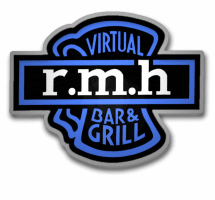rec.motorcycles.harley
General
Philosophical
Synthetic
Oil
Technical
Wrenching
Dyna Frame
Bad Vibes
Rake and Trail
TC88
Cam Specs
Carburetors
Extracting Broken Screws
Fuel Injection Intro
Heads -- Evo BT
Heads -- Shovel
Hop-up Suggestions -- BT
Hop-up Suggestions -- 883
Ignition
Lighting Mods
Neat Stuff
Oil Cooler Fans
Packin' (tools)
Painting & Finish Maintenance
Pipes
Replacement Seats
Roadside Electrical Troubleshooting
Shocks
Tire Specifics
Tranny Lube
Riding
Buying
Selling
History
Harley
.net Resources
Et
cetera
Design and content © 2004
Mild Bill (Asshole #27)
StephG (Asshole#108)
r.m.h VB&G logo design © Jim Combs

Hop-up Suggestions BT EVO
"Big HP costs big money no matter what." -- Mark Cronenweth
The most important thing to do is to plan all your mods ahead of time, because the motor is a package and each part effects the others. Many people do their thinking piece by piece; they waste a lot of money and end up with a lot less HP than desired.
Be aware that the first HP advances are the cheapest. IOW, you can get 28% increase out of a stock motor for $400. The same increase out of a 100 horse plant will cost thousands.
Note that all power increases will increase the stresses on other parts of the machine. You should remain conscious of the reliability trade-offs.
Several popular scenarios are listed below.
Wake up call
Your Harley has been pretty well stopped-up to pass EPA noise and emissions standards. If you only want to wake her, up bolt on the SE air cleaner, SE slip-ons mufflers, HD (stock) 1200 Sporty ignition and a mild bolt in cam (such as the EV13). You will also have to install a Dynajet kit or perform equivalent modifications to the stock CV carburetor.
HP increases will be between 20-30%, with an average of 20% gain across the rpm range of your motor.
The stock XLH 1200 ignition has a more aggressive advance curve than the BT ignition, while keeping the rev limiter. Retaining the rev limiter promotes reliability; you should not rev the motor beyond 5,800 rpm.
You are wasting your time, and may hurt the performance of your motor, if you don't do the carburetor modifications and the exhaust and air cleaner upgrade as a set. The motor will have a flat spot in its acceleration curve and will probably run hotter.
Breathed on
The same changes as in the preceding section, but utilizing parts with room for growth will provide a foundation for future modifications: Quicksilver or S&S Super E carburetor, Dyna 2000 ignition, SE slip-ons or other two-into-one pipe from the list above and a bolt-in cam such as the EV3.
Head Job
The next step involves a hotter cam, and headwork to improve the flow and compression ratio.
Your can buy off-the-shelf from Eldebrock or S&S, or send your heads to BC Gerolamy, Headquarters, Branch etc. It has been suggested that buying new heads and selling the old ones can greatly reduce the cost of this upgrade. Some are of the opinion that welding heads (necessary for bathtub'd compression chamber, flat intake floor, D shaped exhaust etc.) weakens the metal. A point in favor of the Eldebrock is that it is CARB approved.
It is strongly suggested that to select the correct cam, you discuss your set-up with your head provider (and with the shop working on your heads.)
The head work should include upgrading the valve springs to allow for a cam with more than .500 lift. The compression ratio should be bumped by shaving the heads, decreasing the combustion chamber size or installing aftermarket pistons such as Wiseco.
Asphalt Ripper
"Once you hit the 80 hp "wall" you have to spend big bucks to go further." -- Jon Boulle
The next logical step involves increasing the size of the plant. Eighty- eight inches can be achieved by increasing the cylinder bore and installing new pistons, or by increasing the stroke. To accommodate the increased size of your motor, your carburetor and cam may require upgrading and you will probably want to upgrade the driveline to handle the added stress.
"Something to keep in mind when you are looking at the big bore motors is the [stock] cases newer than 89 have a tendency to crack [...] between the cylinders and the lifters [with big bore kits]. If you don't want to use aftermarket cases I suggest you build an 89" (4 5/8" stroker) motor instead." -- Leonard Pennock
Find a very experienced Harley shop to perform this type of work. You probably want to avoid the boutique, as independents shops pay their mechanics more. There are exceptions, such as Bartels in San Diego Ca. and Vallejo Ca. Harley-Davidson, both of which race.
Plan on spending at least a couple of grand.